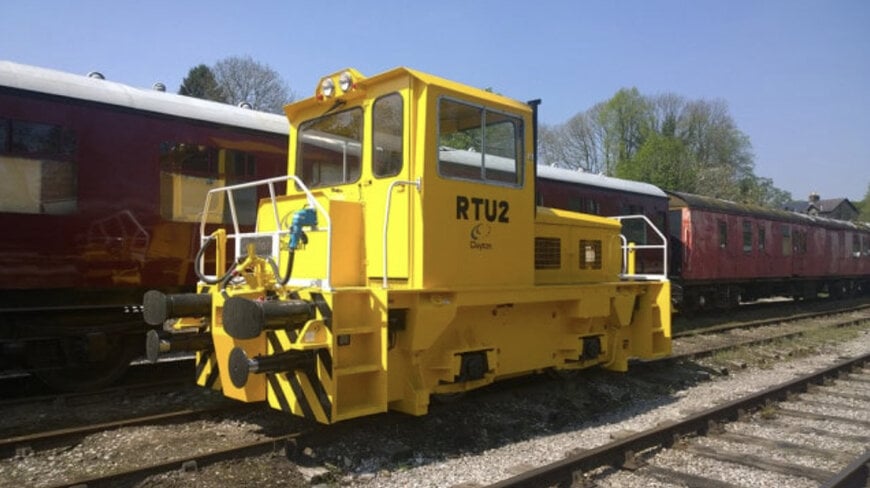railway-international.com
29
'25
Written on Modified on
Clayton Equipment upgrades switcher locomotives
Upgrading switcher locomotives offers a cost-effective alternative to replacement, extending lifespan, improving reliability, and reducing maintenance and environmental impact.
claytonequipment.co.uk

Switching operations are a major part of railway logistics. They are integral to the smooth and efficient operation of rail yards, industrial facilities and short-distance movements. A switcher locomotive, also known as a train shunter, plays a pivotal role in these operations by assembling trains and moving rail cars around within compact spaces.
However, this level of high exertion over time can lead to a drop off in performance, increased downtime and higher maintenance costs. This is when a decision about whether to replace or upgrade your existing locomotive needs to be made.
The Hidden Costs Of Replacement
Replacing switcher locomotives can be a significant financial undertaking, as new engines are expensive and the procurement process can take a number of months. This can place a strain on financial budgets but also brings a halt to operations as older units are phased out and replaced. This downtime can cause disruptions to production schedules or cause logistical bottlenecks.
There is also the fact that many industrial environments which utilise switching locomotives require additional customisation or training for operatives, which can take further time and cost money.
Why Conversions Might Be The Smarter Alternative
Instead of replacing diesel switcher locomotives altogether, it may make more sense to try and convert existing models. This approach extends the life of assets already in your possession and can introduce a whole series of new performance and environmental upgrades. The result can potentially be a more cost-effective way to deliver long-term financial benefits.
Conversions can take many forms depending on the requirements of your rail operation. It could be that you replace more traditional, maintenance-heavy traction motors with more modern alternatives. Or you might need to install more up-to-date safety and monitoring equipment. These kinds of changes can breathe new life into old locomotives and keep them on the rails for years to come.
The Key Benefits Of Conversions
There are several key benefits of choosing to convert rather than replace older locomotives. These can include:
- Lower capital and operational costs: Conversions are much less expensive than buying a new locomotive and savings can also be made on maintenance costs.
- Extended lifespan: By modernising the components and updating outdated systems conversions can add years or even decades to the lifespan of your switcher locomotive.
- Increased availability: Updated locomotives are less prone to breakdowns and increased system reliability means your fleet is available for operations more of the time.
- Improved safety and comfort: Conversions to cabins, controls and visibility features can help to make older locomotives more comfortable and safer to operate.
- Environmental performance: Older switchers can be very emissions heavy and by updating the power system you can bring them in line with more modern emissions regulations.

